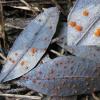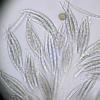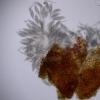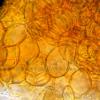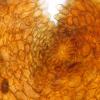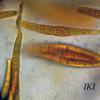
19-12-2025 10:10
Patrice TANCHAUDBonjour, récolte réalisée en milieu dunaire, a

18-12-2025 17:23
 Bruno Coué
Bruno Coué
Bonjour,je serais heureux d'avoir votre avis sur c

18-12-2025 21:17
Pol DebaenstThe identification took me to Byssonectria deformi

18-12-2025 18:07
Margot en Geert VullingsThese plumes were found on rotten wood.They strong

17-12-2025 18:35
 Michel Hairaud
Michel Hairaud
Bonjour à tous/Hi to everyone I am passing along

15-12-2025 15:48
 Danny Newman
Danny Newman
Melanospora cf. lagenaria on old, rotting, fallen

15-12-2025 15:54
 Johan Boonefaes
Johan Boonefaes
Unknown anamorph found on the ground in coastal sa

15-12-2025 21:11
 Hardware Tony
Hardware Tony
Small clavate hairs, negative croziers and IKI bb

15-12-2025 07:09
 Danny Newman
Danny Newman
indet. Rutstroemiaceae sp. on unk. fallen leavesMc
Apotecios de 1 mm, en zona dorsal de Pistacia lentiscus. Agrupaciones de esporas sin visualizar ascas, pero se intuyen, de hasta 105 x 35 micras. Ascosporas longitudinales, naviculares o en forma de boomerang, con 3 septos y multitud de pequeñas gutulas, dejando libre los extremos esporales. Ausencia de parafisis. Excípulo formado por células globosas y subglobosas.
Hi to all!
Apothecia of 1 mm, in dorsal area of leaves of Pistacia lentiscus. Groupings of spores without display asci, but will foreshadow of up to 105 x 35 microns.Longitudinals naviculars and with the form of a boomerang , with 3 septa and a multitude of small gutules, leaving the spores ends, 65-100 x 5-6 microns. Absence of parafisis. Excípulum formed by globose and subglobose cells.
Any ideas?
Thanks and greetings to all

Andy
I thought at Calonectria, but which species ?
One of them, C. paucimarosa, has been found on Pistacia but ascospores are very different.
Let's talk specialists.
Alain
Alain

Are ascomata red or darker at base? please test the changing of color in KOH, it is very impor†ant.
Christian
The specie is Calonectria pyrochroa. Send link to friend Enrique Rubio:
http://www.asturnatura.com/especie/calonectria-pyrochroa.html
Thanks to all
Javier

